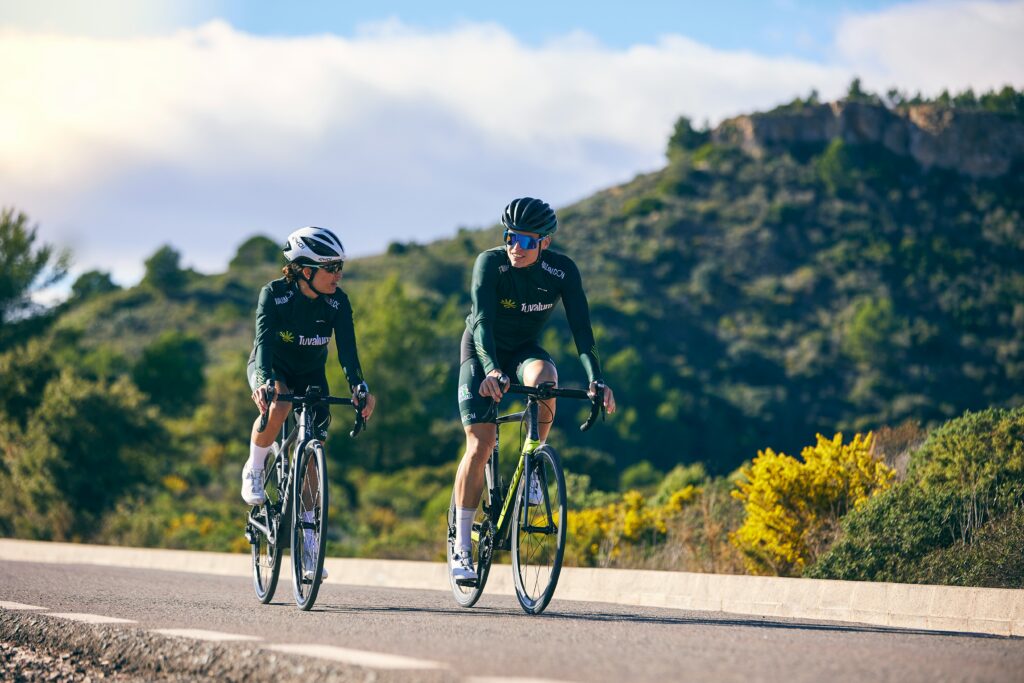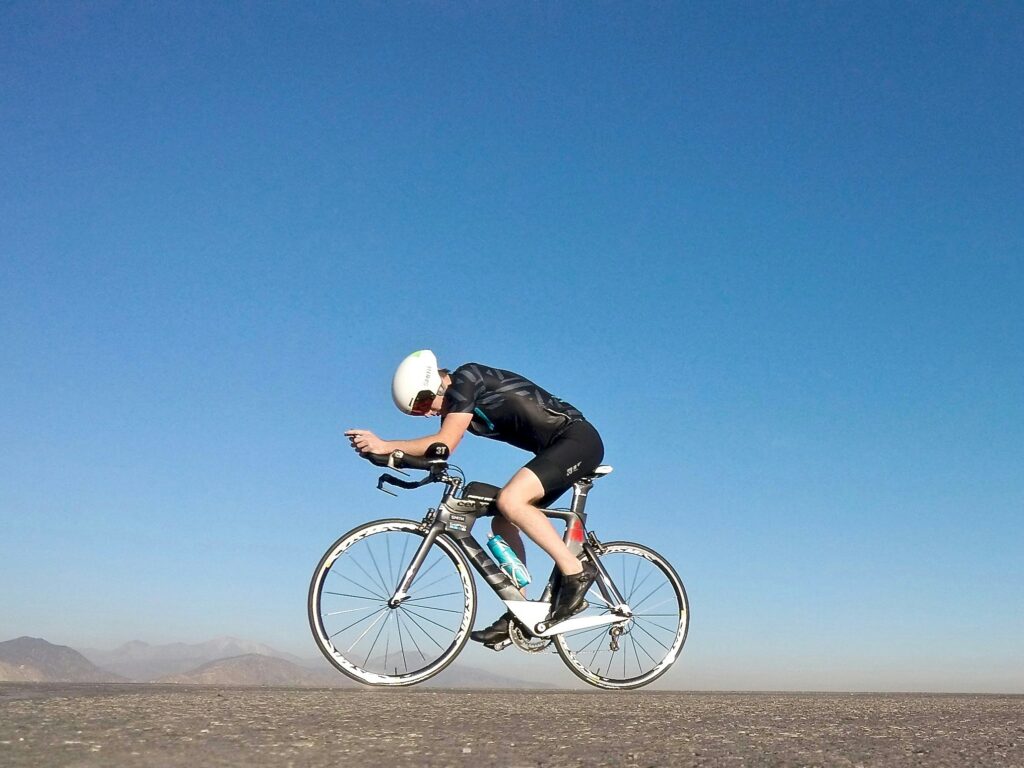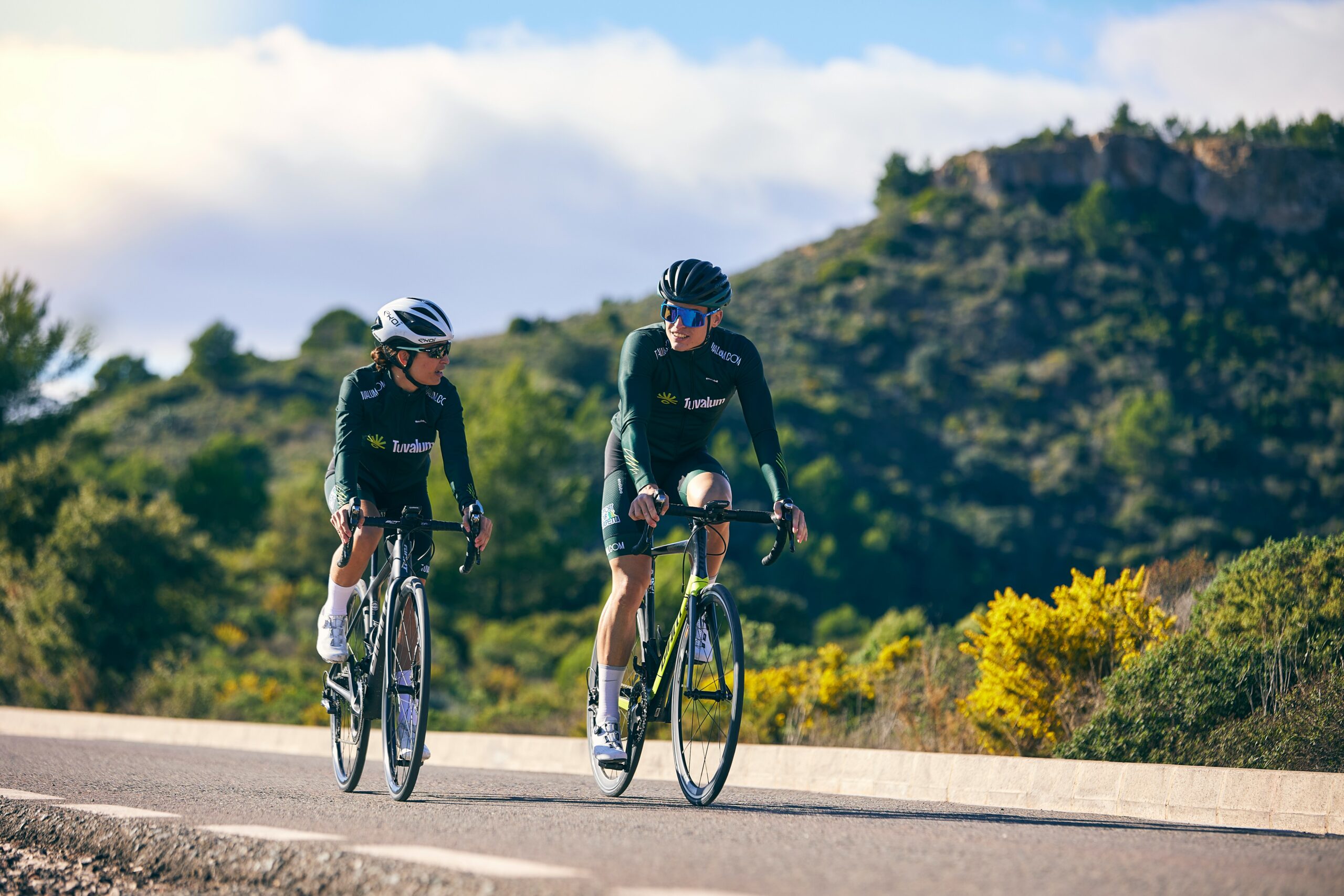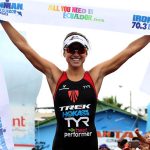The formula isn’t complicated: push hard in intervals, build endurance in Zone 2, recover smarter than you train, fuel your body, sleep well, and, above all, stay consistent.
I’ve been riding bikes for 10 years now, and one thing I’ve noticed is how obsessed cyclists get with numbers. Average speed, watts per kilo, VO2 max… but there’s one number that always comes up in conversation: FTP.
What is FTP?
FTP, or Functional Threshold Power is basically the maximum effort you can sustain for an hour without completely blowing up. When I first started training with power, my FTP was nothing to brag about. But over the years, by mixing in smart training, plenty of long easy miles, and learning the hard way about recovery, I’ve managed to push it up steadily.
If you’ve ever wondered how to improve your FTP, let me share what’s worked for me. It’s not rocket science, but it does take patience, discipline, and knowing when to go easy.

Why FTP Matters (But Isn’t Everything)
FTP isn’t the holy grail of cycling, but it’s a very handy marker. It tells you roughly how strong you are compared to yourself over time. It’s also the number you’ll use to set up your training zones.
The higher your FTP, the easier those long climbs feel and the less you suffer when the group ride gets spicy. But remember: FTP doesn’t win races on its own. Tactics, endurance, handling, and grit matter too. Still, increasing it makes everything else just a little easier.
Intervals: The Hard Truth
There’s no getting around it: if you want to raise your FTP, you’ll need to embrace intervals. When I say intervals, I don’t mean sprinting blindly until your legs fall off. I’m talking about structured, uncomfortable but controlled efforts.
My personal favorite for building FTP is the 4×8 minute interval at just above threshold. It’s long enough to hurt, short enough to repeat, and incredibly effective. Another classic is 6×3 minutes at a higher intensity. Both will leave you gasping if done right.
I’ll be honest, interval days are the ones I dread most. I’ve stared at my bike more than once thinking, do I really want to do this today? But every time I’ve committed, I’ve come out stronger. These efforts stretch your capacity, teach your body to tolerate the burn, and nudge that FTP upward.

Zone 2: The Secret Sauce
Here’s the thing: intervals alone won’t cut it. You need a foundation. That’s where Zone 2 riding comes in. These steady, easy rides (around 60–70% of FTP) don’t feel heroic, but they build the aerobic engine that makes the hard work possible.
I used to undervalue these rides. I’d go too hard on “easy” days and wonder why I was always tired. Once I disciplined myself to actually ride slow on Zone 2 days, everything clicked. Suddenly, I could recover faster, handle more intervals, and ride longer without falling apart.
For me, the magic happens on rides of 2–4 hours in Zone 2. You come home a bit tired but not wrecked. Do enough of these, and you’ll notice your heart rate dropping for the same power. That’s fitness building quietly in the background.
Rest Days: The Lessons I Learned the Hard Way
When I was younger, I thought more was always better. If I had a free day, I’d ride. If I felt tired, I’d ride anyway. Guess what? I hit plateaus, got sick, and stopped improving.
The truth is, rest days are training days too. Your body needs time to rebuild and adapt. These days, I take at least one complete rest day a week, sometimes two if I’ve been stacking big sessions.
And don’t feel guilty about it. Sitting on the couch or taking a nap isn’t being lazy, it’s part of the plan. I’d even argue that knowing when not to train is what separates experienced cyclists from rookies.

Recovery Rides: The Art of Going Slow
There’s also a middle ground: the recovery ride. Picture this, an easy 45–60 minutes spinning at embarrassingly low power, maybe chatting with a friend or just cruising with a podcast in your ear.
These rides keep the legs loose and the blood flowing without adding more stress. The key is keeping your ego in check. If you’re sweating buckets or breathing hard, you’re doing it wrong. Think of these as active massage sessions on two wheels.
Don’t Forget Food and Sleep
No matter how perfectly you balance intervals, Zone 2, and recovery, you won’t improve if you’re underfed and underslept.
I used to cut corners on food, thinking lighter was always faster. What happened? I’d bonk halfway through long rides and never recover properly. Now I eat with purpose: plenty of carbs for energy, enough protein for muscle repair, and healthy fats to keep things balanced.
And sleep? Honestly, it’s the best legal performance enhancer out there. When I started taking sleep seriously, aiming for 7 to 8 hours consistently, my training gains doubled. It’s not glamorous advice, but it works.
Consistency Beats Everything
If there’s one takeaway from my 20 years of chasing watts, it’s this: consistency is king.
You don’t need to smash every ride or mimic a pro training plan. Just stack weeks of steady training, mix in intervals, plenty of Zone 2, rest days when you need them, and keep showing up. Even if life gets in the way, doing something is always better than doing nothing.
Check your FTP every couple of months, celebrate the gains (even 5 watts is a win), and trust the process. Improvement comes slower than we’d like, but it comes.

Final Thoughts
FTP isn’t just a number, it’s a reflection of how well you’ve balanced stress and recovery over time. If you want to improve it, the formula isn’t complicated: push hard in intervals, build endurance in Zone 2, recover smarter than you train, fuel your body, sleep well, and, above all, stay consistent.
Two decades of riding have taught me this: there are no shortcuts, but there are plenty of riders looking for them. Don’t be that rider. Play the long game, and your FTP will take care of itself.






I have not checked in here for some time as I thought it was getting boring, but the last few posts are good quality so I guess I will add you back to my daily bloglist. You deserve it my friend 🙂
I just like the helpful information you provide in your articles. I will bookmark your weblog and test once more here regularly. I’m moderately sure I will be informed many new stuff proper right here! Good luck for the following!